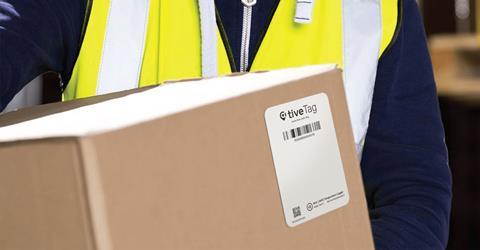Tive’s cloud-enabled temperature logger can be used again and again and is half the cost of a conventional logger
Nothing spoils someone’s day in logistics more than a perishables shipment that gets rejected due to damage from being too hot or too cold. Product rejection happens frequently in this industry, and each time it happens, it creates a chain reaction that negatively impacts shippers and carriers.

Shippers sometimes have to file a claim to recover their losses. The process usually causes a lot of anxiety due to the potential cost of damages. The shipper will expect someone to pay for it. This might lead to some heated conversations with accusations that each other are to blame. Was there a mistake on the rate confirmation? Did the truck’s reefer breakdown? When did the carrier last calibrate the reefer? Usually, the shipper ends up filing an insurance claim.
With all the potential risks involved in hauling refrigerated goods, let’s look at some of the primary reasons why companies should use temperature loggers for better cold chain visibility.
Every shipment matters
Logistics professionals are responsible for ensuring that their shipments arrive on time without damage or spoilage. Logistics managers have limited visibility into whether their providers are correctly tracking and maintaining temperatures. Some shippers require their carriers to manually record a cold chain custody form.
Or, a carrier may send a photo of their reefer temp to communicate with their customer that they were following proper instructions. Yet, these methods provide limited data and do not identify whether these loads experienced temperature deviations while in transit. Modern temperature loggers, however, capture temperature conditions at the shipment’s origin to the shipment’s destination, at regular intervals. The result is total visibility on every shipment, ensuring that your perishable commodities are fully tracked throughout its journey.
How temperature loggers work
Temperature loggers are small, hyper-accurate, paper-thin labels that contain a built-in sensor that tracks the temperature conditions of the shipment it’s attached to. The sensor tracks interior reefer temperatures to fully monitor cold chain conditions.
Invest in technologies to lower operational cost
Rejected truckloads add a significant amount to overall transportation expenditures. Shippers have already been strained by inflation, capacity shortages, rising fuel costs, and global climate conditions. Investing in cost-effective temperature loggers is the easiest way for shippers to maintain consistent, high levels of quality and safety throughout their entire cold chain.
Create an audit trail for regulatory compliance
Food and produce companies are familiar with the requirements necessary to move their goods and ensure quality and safety standards are met.
Ultimately, the shipper is responsible for collecting compliance documentation. Temperature trackers automatically store a digital record of each shipment, providing full visibility of temperature conditions throughout the entire journey of the load and allowing shippers to download complete shipment reports.
Introducing Tive Tag
Imagine a cloud-enabled temperature logger, in the form of a thin, flexible shipping label, and at half the cost of a conventional logger. Now make it last for a year, design it to be reused trip after trip, and then give it a non-Lithium earth-friendly battery. Introducing the Tive Tag. It’s like a shipping label – just one that has an incredible amount of tech embedded inside. Simply stick, tap it with your phone, and ship.
Learn more about Tive Tag here



